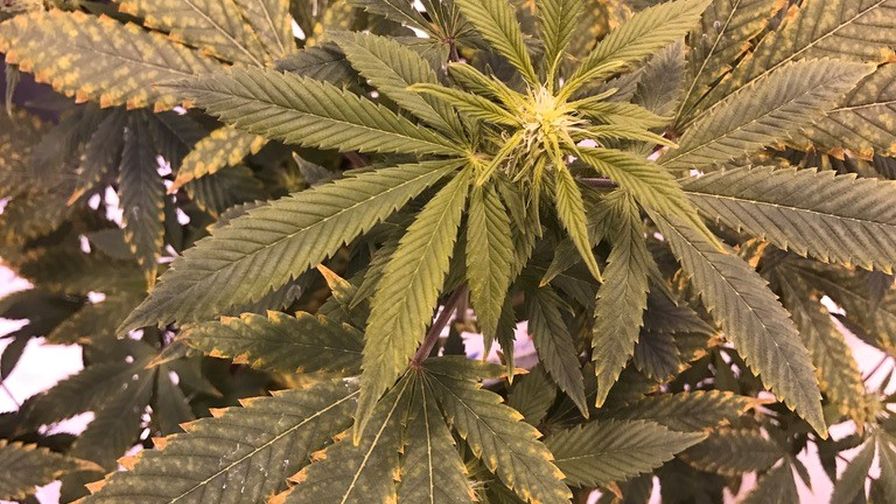How to Use Sap Analysis for a More Comprehensive Cannabis Nutrient Monitoring Program
 For decades, cannabis growers have used leaf tissue analysis to monitor the nutrient uptake of their crop. These tests are useful for ensuring that feeding programs match the plant’s nutritional needs, and they are a critical tool for troubleshooting crop issues. The problem, however, is that when we work with tissue analysis, we are working in the past.
For decades, cannabis growers have used leaf tissue analysis to monitor the nutrient uptake of their crop. These tests are useful for ensuring that feeding programs match the plant’s nutritional needs, and they are a critical tool for troubleshooting crop issues. The problem, however, is that when we work with tissue analysis, we are working in the past.
Leaf tissue analysis is a summary of what has already occurred inside of the plant. It’s not a real-time snapshot of what is going on inside of the plant today. Deficiencies, imbalances, and excesses can take weeks to visibly manifest themselves in the plant, and once the problem is recognized and tissue samples are sent off to the lab for diagnosis, it’s often too late. The best a grower can do is prevent the problem from happening again with the next crop.
With such a valuable plant as cannabis, growers can’t afford to wait. To accurately steer crop production, they need a way to monitor nutrient uptake in real-time. Enter plant sap analysis.
Plant sap is the fluid that is actively flowing through the xylem and phloem of the plant. By extracting and analyzing the mineral and metabolic parameters of this sap, growers can make real-time decisions to help steer the plant’s health, productivity, and cost to grow it.
When used in conjunction with nutrient solution and leachate drain tests, sap analysis can provide growers with a more comprehensive understanding of their feeding program’s successes and shortfalls. Solution tests show the grower which nutrients are being fed to the plant, sap analysis shows which nutrients the plant is taking up, and leachate tests show how much of those nutrients the plant is not consuming. This allows the grower to dial-in their feed rates and maximize nutritional performance. Issues like elevated heavy metals or micronutrient deficiencies can be detected long before they manifest themselves in the plant, and excess minerals can be dialed back to avoid wasting money on fertilizer that the plant doesn’t need.
Although still relatively unknown, several labs in the U.S. and Canada perform sap testing and analysis. New Age Laboratories in Michigan, in particular, caters to cannabis growers. Before sending samples, growers should verify that the lab will accept cannabis leaves for testing. Not all labs do.
Ideally, leaf samples should be taken every two weeks during the crop cycle, and consistency is critical for accurate results. The samples must be taken at the same time each day. The amount of time that the plant has been photosynthesizing can dramatically affect the test results. A leaf sample taken one hour after sunrise will present a different sap analysis than a plant that has been photosynthesizing for six hours.
When taking samples for sap analysis, anticipate needing a minimum of 80 grams of leaf material from both the top and bottom of the plant. This separation of old and new growth (at least 18 centimeters) is important to show the disposition of mobile nutrients. Only fully formed adult leaves should be selected, with the leaflets and petiole intact. For new growth, samples should be taken below the third node. For the older growth, pick the first fully formed leaves at the base of the main stem.
For shipment to the lab, leaves should be placed into vacuum-sealed bags or large Ziplock-type sandwich bags with the air pressed out. The goal is to stop the respiration of the leaf after the sample has been taken. A cool pack should be included with the samples but packaged to prevent the leaves from freezing in transit, which will affect the accuracy of the test. When shipped overnight, the best labs offer results within 24 hours of receipt, and they provide an interpretation of the results and recommendations for adjustments to the feeding program.
There are do-it-yourself tests, but these present several challenges that could prevent growers from obtaining the comprehensive analysis that they desire. First, extraction of the sap can be tricky as it requires steady pressure, and too much force can result in the pulverization of the sample, affecting the final results. Second, most home kits only test for one nutrient, whereas labs provide a comprehensive analysis of all minerals present in the plant. Third, these kits need to be consistently calibrated for accurate results. Unless a grower has an in-house lab with a quality assurance team that can guarantee the tests’ accuracy and consistency, it’s best to stick with the professionals.
Cannabis growers are equally concerned about crop quality as they are production costs, and sap analysis can be a powerful addition to their tool chest of crop steering instruments. By offering growers real-time information about the uptake of nutrients, sap analysis can help growers provide their plants with precisely what they need, when they need it, and nothing more.









